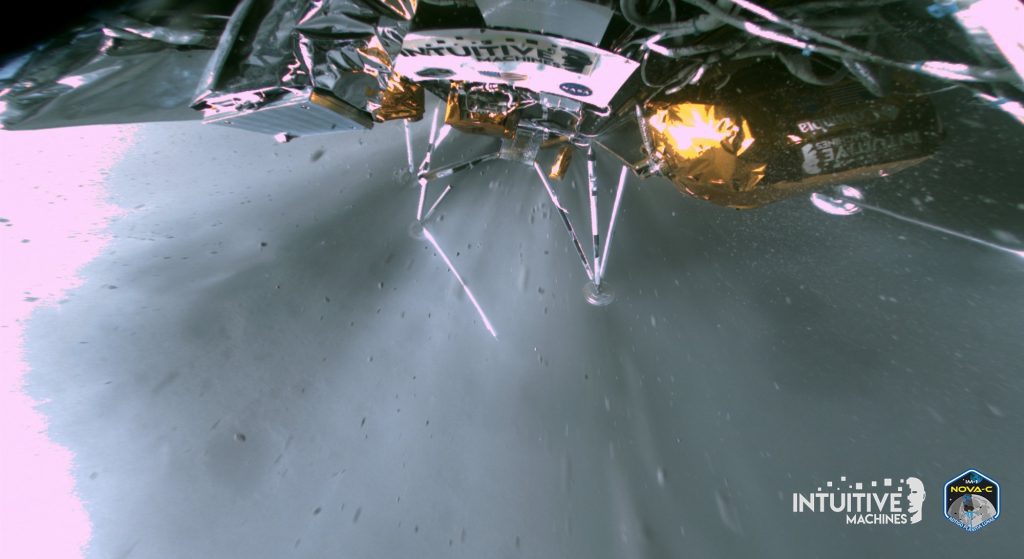WASHINGTON — Intuitive Machines claims it has improved its financial situation after successfully landing on the moon. The company is now focusing on its next mission and pursuing other contracts.
The Houston-based company reported on March 21 that it had an operating loss of $56.2 million in 2023, with a revenue of $75.5 million. This revenue was slightly lower than the $85.9 million reported in 2022, when the operating loss was $5.5 million.
The company's cash balance was only $4.5 million at the end of the year, but it grew to $54.6 million by March 1. Steve Vontur, acting chief financial officer, explained on an earnings call that this increase came from an unnamed institutional investor exercising stock warrants and strategic investments.
“We are confident that the cash balance will carry us through the year, even without additional wins,” said Steve Altemus, chief executive of Intuitive Machines, during the call.
According to him, the company is in a strong position to win more contracts. Several opportunities could arise as early as the second quarter, such as a new task order from NASA’s Commercial Lunar Payload Services (CLPS) program, the agency’s Near Space Network Services program for cislunar communications services, and the Lunar Terrain Vehicle (LTV) program.
On March 19, NASA announced that it would select the company, or companies, to participate in the LTV program on April 3. Intuitive Machines submitted a proposal, competing against various established and entrepreneurial companies, offering a rover delivered to the moon on the company’s Nova-D lander.
Altemus noted that while the LTV program has a total value exceeding $4 billion, the initial contracts to be announced next month will be feasibility studies valued at about $30 million each over one year. Intuitive Machines is leading a team that includes AVL, Boeing, Michelin and Northrop Grumman.
The company is beginning to generate revenue from the OMES III engineering support contract from NASA that it secured last year. The company recognized $12.5 million in revenue from one month of work on that contract last year, and Vontur stated that this amount should be the average monthly revenue the contract generates for the next year.
The contract is part of Intuitive Machines' efforts to diversify its business beyond lunar landers, but it also carries some risks. This includes support for NASA’s On-orbit Servicing, Assembly and Manufacturing (OSAM) 1 mission at the Goddard Space Flight Center, a satellite servicing mission that has faced significant delays and cost overruns.
“We’re working very closely with NASA to put that project back in the box and get it launched,” Altemus said, noting that OSAM-1 was fully funded in the final fiscal year 2024 spending bill passed earlier this month.
He did not mention, though, that NASA announced March 1 its intent to cancel OSAM-1, winding down work by the end of the current fiscal year. NASA included only $11 million for OSAM-1 in its fiscal year 2025 budget proposal on March 11 to cover final closeout of the project.
Altemus admitted that there is “a little uncertainty there” regarding OSAM-1, but if the mission does not proceed, NASA would provide the company with other, unspecified work under that contract.
Lunar lander updates
The company Altemus mentioned that they are still analyzing information from their IM-1 lunar lander trip. Despite the lander tilting, it managed to send back data from most of its payloads. NASA and the company both agreed that the mission was a complete success. as the mission came to an end.
Altemus mentioned that Intuitive Machines anticipates receiving 95% of the award payments for the landing, withholding 5% due to one payload not returning data. They are discussing with NASA alternative data they could provide to meet the payload's requirements and earn the remaining 5%.
He mentioned that the company has identified areas that need adjustment for the upcoming IM-2 lander mission, such as antennas and cameras. He stated that these changes from IM-1 will not impact the schedule significantly.
IM-2 is currently scheduled for November, but it might be delayed because NASA is considering moving the landing location slightly in the lunar south polar region. This could have a marginal impact on the schedule, but they are still aiming for a 2024 mission for IM-2.
The company is also hopeful about reestablishing contact with IM-1 after the lunar night. Trent Martin, senior vice president of space systems at the company, said they should have started receiving sunlight on March 20 after the extended lunar night, but they have not detected any signals yet.
He stated that they have been listening for signals since then, but have not detected any yet. He thinks it's unlikely, but there is a possibility, so they will continue to listen for the next couple of days.









